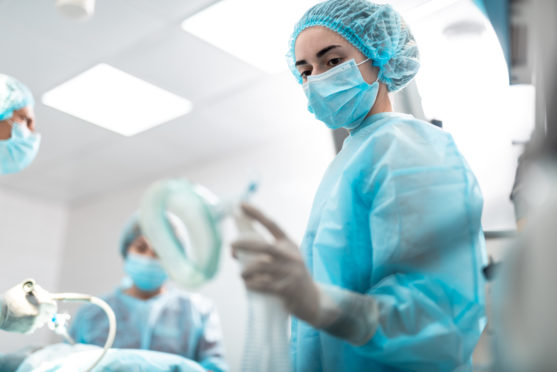
GPs working in neighbourhoods most vulnerable to Covid infection are not being told test results in their postcode, a report reveals.
Family doctors operating in Scotland’s poorest postcodes say they are only told if their own patients test positive and remain unaware if there is a cluster in the community.
Fears about a failure to distribute detailed testing results at a local level – highlighted before Leicester was locked down again last week – were revealed in a report laying bare the impact of the coronavirus crisis in Scotland’s most deprived communities.
The report – GPs at the Deep End – reveals how terrified patients with symptoms of cancer, heart attacks and strokes were too scared to seek medical attention.
GPs also revealed there is no information about local outbreaks even though poor housing and underlying health conditions means deprived areas are suffering most. The Deep End group is a network of GP surgeries in Scotland which cover the 100 most deprived patient populations, in order to allow doctors to share their experiences.
Co-author of the report Dr David Blane, a GP in Pollokshaws, Glasgow, and a research fellow at Glasgow University, said: “I don’t have any geographical data about clusters of Covid. We only find out information about our own patients. If we were to be living with Covid for a while that information would be really useful.
“I had a conversation not that long ago with a patient of mine who is shielding because he had a cancer diagnosis. He was wanting to know if there had been many cases in his area and I couldn’t answer. If he’s thinking to what extent is it safer here than the other side of Glasgow it would be good to have that awareness of localised outbreaks.”
Dr Blane’s report includes a statement from a GP who said: “We do not really know how many Covid-19 cases are in the community. I would like to know that but we do not get drilled-down information or, at least, I am not aware of it.”
Dr Noy Basu, a GP in Possil, Glasgow, said: “In cases of lower health literacy and vulnerability, delays in communication can have magnified implications.”
Health Secretary Jeane Freeman admitted to MSPs last month that statistics are not yet in a single system. Data from the Scottish Government’s national Test and Protect system has not been combined with complex virus data collected by local public health teams.
The Scottish Government said “quality assurance” work is being done on its statistics and more localised data will be released on Wednesday. But the statistics will only be available at a health board level and will not be broken down by postcode area.
Dr Petra Sambale who works in Possil in Glasgow said: “I hope that data will come. I hope that in the future we will have the right tools to react to any clusters quickly. It would be nice to know what is going on in the community.”
Dr Sambale said some of her gravely ill patients who did not have Covid refused to go to hospital because they were afraid of catching the virus on wards.
Dr Blane warned that many people in the poorest parts of Scotland died because they obeyed the government’s Stay Home, Protect the NHS instruction and did not seek medical attention.
Dr Blane said: “It’s a strong hypothesis that the messaging has cost lives. I know patients who have had prolonged chest pain and haven’t sought advice and have had heart attacks days later. I know patients who sat at home with symptoms of a stroke and who have perhaps not had the outcomes they could have had if they had sought immediate attention.”
Dr Gillian Dames, a GP in Parkhead in Glasgow, said: “This is a wake-up call for society that there are long-established health inequalities that are going to get worse as a result of the pandemic.”
Peter Kelly, director of the Poverty Alliance, a network of charities working in the poorest communities, said: “We need to take action now to ensure that health services in communities affected by poverty have the resources they need to address all the social and economic, as well as health, challenges that individuals will face.”
At the deep end: The report reveals worrying case studies in poorest areas
Patient A
The frail, elderly man with multiple health problems. We used video assessments and eventually visited wearing PPE. He became so unwell he was admitted to hospital a few days later. He died without his family present. Covid-19 victim. Had we brought it to him?
Patient B
I saw a woman with alcoholic liver disease who had stayed at home for two weeks as her abdomen swelled to the point she had difficulty walking. I asked her if she had spoken to her GP. She had assumed they were closed. The messages clearly confused some people.
Patient C
I saw a woman with alcoholic liver disease who had stayed at home for two weeks as her abdomen swelled to the point she had difficulty walking. I asked her if she had spoken to her GP. She had assumed they were closed. The messages clearly confused some people.

Enjoy the convenience of having The Sunday Post delivered as a digital ePaper straight to your smartphone, tablet or computer.
Subscribe for only £5.49 a month and enjoy all the benefits of the printed paper as a digital replica.
Subscribe